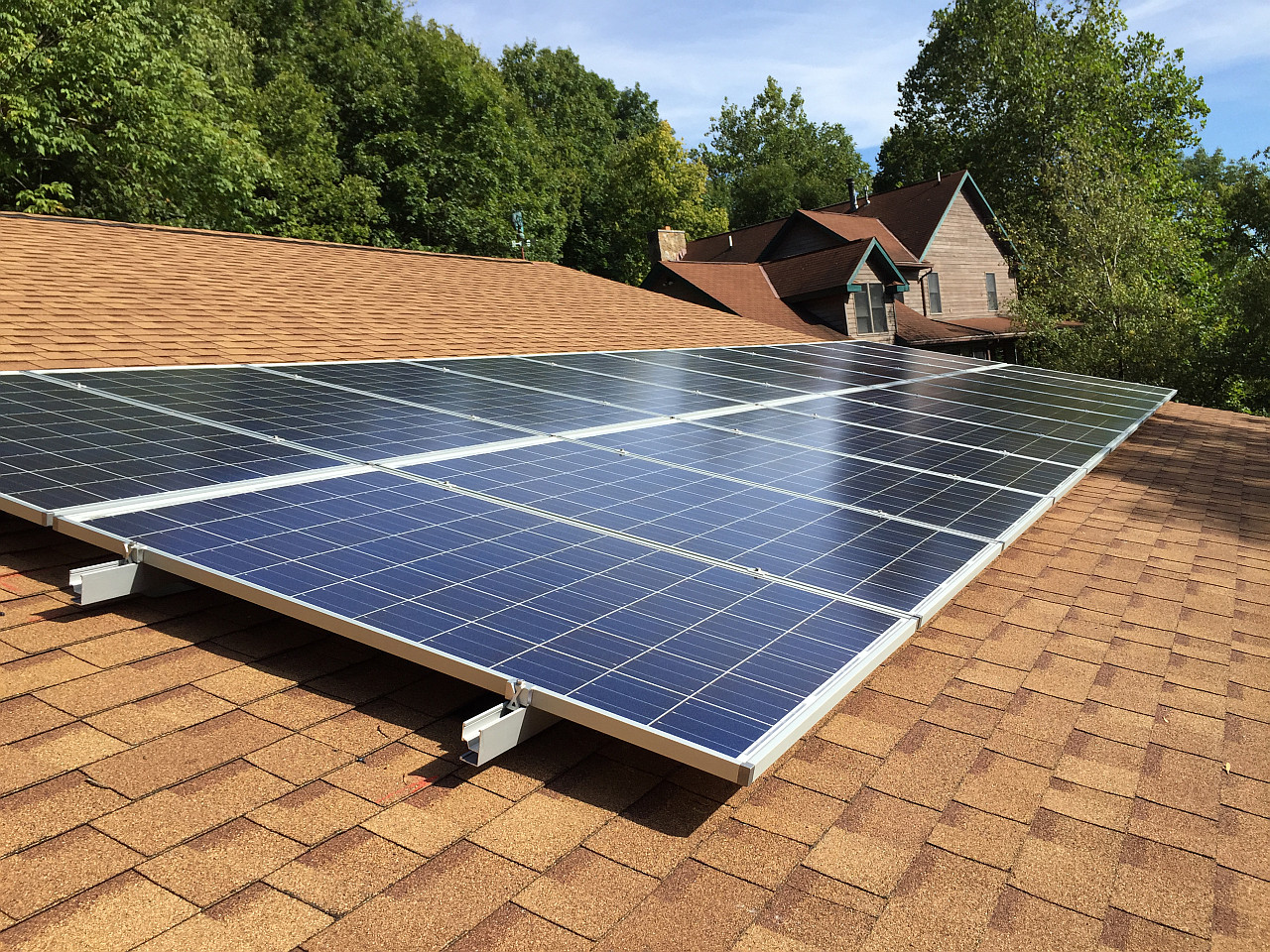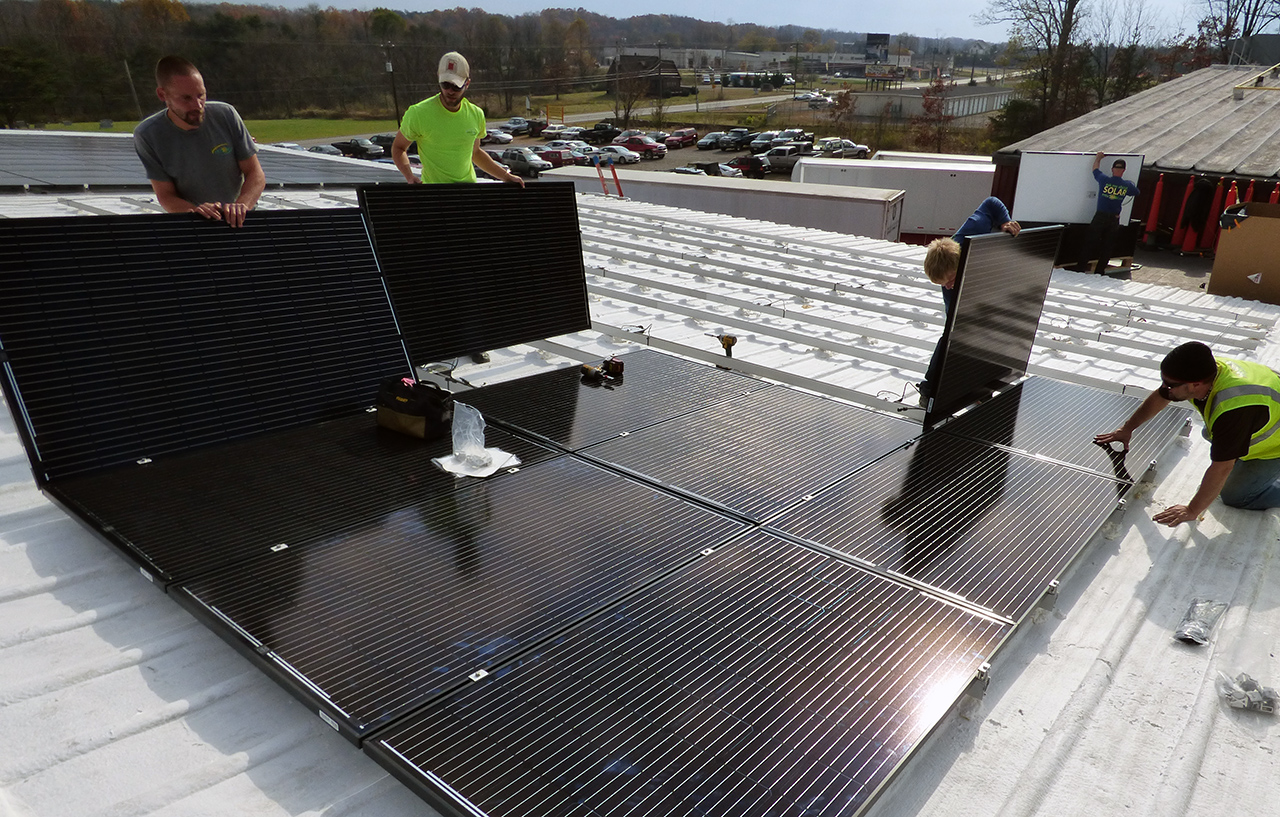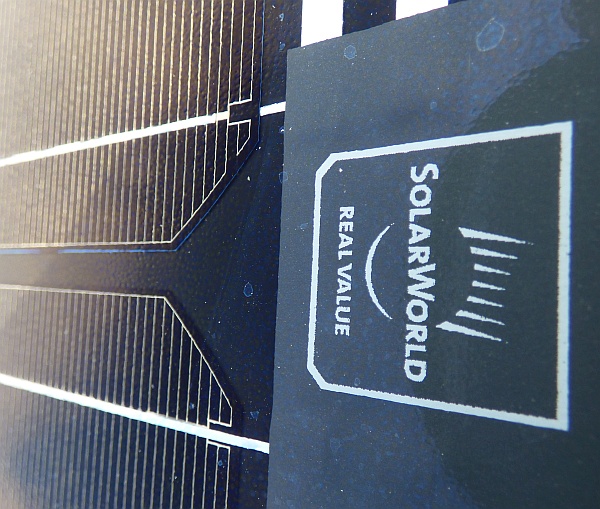 Most people know what a solar panel is, and they know that it appears as a flat, generally dark bluish unit with a glass surface. However, a large percentage of people do not understand how these panels are made, be it the complex factories needed to create them or the relatively simple inputs that become the panels that give us free, long-term renewable energy. Solar modules (often referred to as panels) have a few key ingredients that make them capable of turning the sun’s light into usable electricity for your home or business. What follows is a description of the basic ingredients that make up a solar module, as well as some ways that engineers are continuing to innovate and improve solar technology.
Most people know what a solar panel is, and they know that it appears as a flat, generally dark bluish unit with a glass surface. However, a large percentage of people do not understand how these panels are made, be it the complex factories needed to create them or the relatively simple inputs that become the panels that give us free, long-term renewable energy. Solar modules (often referred to as panels) have a few key ingredients that make them capable of turning the sun’s light into usable electricity for your home or business. What follows is a description of the basic ingredients that make up a solar module, as well as some ways that engineers are continuing to innovate and improve solar technology.
Recipe for a Solar Panel
Silicon Layers
The basic ingredient in a mono-crystalline solar cell? That would be sand. According to How It’s Made, sand is the key raw ingredient that starts the production of the silicon layers used in traditional solar cells. The sand is heated to incredibly high temperatures to become a molten liquid, which is then purified and grown into a silicon ingot. This is part of why the solar cell creation process is labor and energy intensive.
The ingots are then sliced into thin layers. These layers allow the flow of energy that begins with photons exciting the surface layers, releasing loose electrons through the inner layers to create an electrical field. At its heart, a solar cell is based on these thin layers, created using proprietary processes but yielding unassuming rectangles of semi-conducting material. These cells on their own are extremely fragile.
Metal Backing and Conducting Strips
Most silicon solar cells then receive a metal backing and conductive metal strips that “receive” and transport the electrical current that is generated from the released electrons in the silicon. Each individual solar cell is a small square or rectangle, but these flat pieces are assembled together with silver strips that connect and conduct all the electricity to a central location. Typical solar panels today are comprised of either 60 or 72 of these cells connected together. From there, the electricity travels away from the panel, toward other parts of a solar energy system such as battery storage or an AC/DC inverter.
Anti-Reflective Layers
An anti-reflective film is applied to the top of each solar cell. Without this, the cells would be much less efficient: more of the light would reflect away rather than be absorbed straight into the silicon. This layer is often made of silicon nitride or titanium oxide. Anti-reflective layers make solar panels much more efficient and have been refined over time as scientists continue to develop solar power technology.
Glass and Frames
To protect the panels, a layer of glass is added over the panel’s collection of linked up cells to protect them from chipping and other kinds of damage from the elements. Different kinds of glass can be used to create this protective layer, and it is important to invest in the best quality glass possible, since lower-quality materials can cloud or be susceptible to damage. Frames are also standard, since a sturdy frame makes it possible to mount the solar panel easily and therefore makes installation and maintenance less labor intensive. The frames are often made of aluminum and interface with the rest of the mounting structure needed to create a sturdy solar power array.
Recent Innovations in Solar Technology
Glass Solar Modules: As described by Energy Sage, there are now solar panels that don’t include the dark, opaque backing materials and instead use the same technology as described above while also allowing light to pass through the layers. This means that windows, skylights, and other clear glass walls and panels can potentially generate electricity. These have not yet been widely used in most commercial and residential panel systems in the United States, but the aesthetic potential of them is interesting.
Solar Roof Tiles: Designed to look and function like roof shingles, solar roof tiles present an exciting new frontier for solar power. While quality ones are prohibitively expensive right now, the idea of combining ultra-strong solar squares with the typical covering for a roof presents a new aesthetic option. Innovations like this help people to see that there are ways to build solar cells into the standard elements of one’s house, like the roof or windows. For now and likely the foreseeable future, the self contained solar module remains the most cost effective way to generate power from the sun and reach ROI quickly.
Frameless Modules: Designs for solar panels have innovated substantially, and you can expect to continue to see changes in the look of solar panels as people realize that they can have a solar panel system and still focus on beauty and design of their homes. For instance, frameless solar panels are less common but do have a beautiful slim profile that some prefer over the framed versions. Some frameless panels are also slightly flexible and make for good applications on RVs and trailers. Framed solar panels still dominate the industry however because of their less labor intensive installation process, durability and cost, but frameless panels are another aesthetically pleasing design we expect to see more of as prices fall.
Bifacial Solar Modules: Remember that all-glass, see-through model for solar panels? Solar panels without the dark coating on the back have the option of receiving input on both sides of the panel, for instance if the panel is placed above a white reflective surface. Rather than only catching photons when they originally hit the surface, some of them will pass through the glass, hit the reflective surface below, and bounce back, increasing the total energy yield. These bifacial solar panels are still being evaluated to determine just how efficiently they can be used and what kinds of factors create the optimum installation conditions. The creativity needed to develop such a product shows that increases in solar energy efficiency are continually coming.
 Solar panels may only have a few simple “ingredients” but they can be assembled together to completely eliminate your electric bill for decades to come. Mountain View Solar specializes in industry standard rigid frame module installation using top quality equipment.
Solar panels may only have a few simple “ingredients” but they can be assembled together to completely eliminate your electric bill for decades to come. Mountain View Solar specializes in industry standard rigid frame module installation using top quality equipment.
Please fill out our free consultation form now and a consultant from our zero-pressure sales team can explain the options available. mtvSolar is your local West Virginia, Virginia, Maryland and Pennsylvania contractor, with NABCEP certified employees and all proper licenses and insurance.


